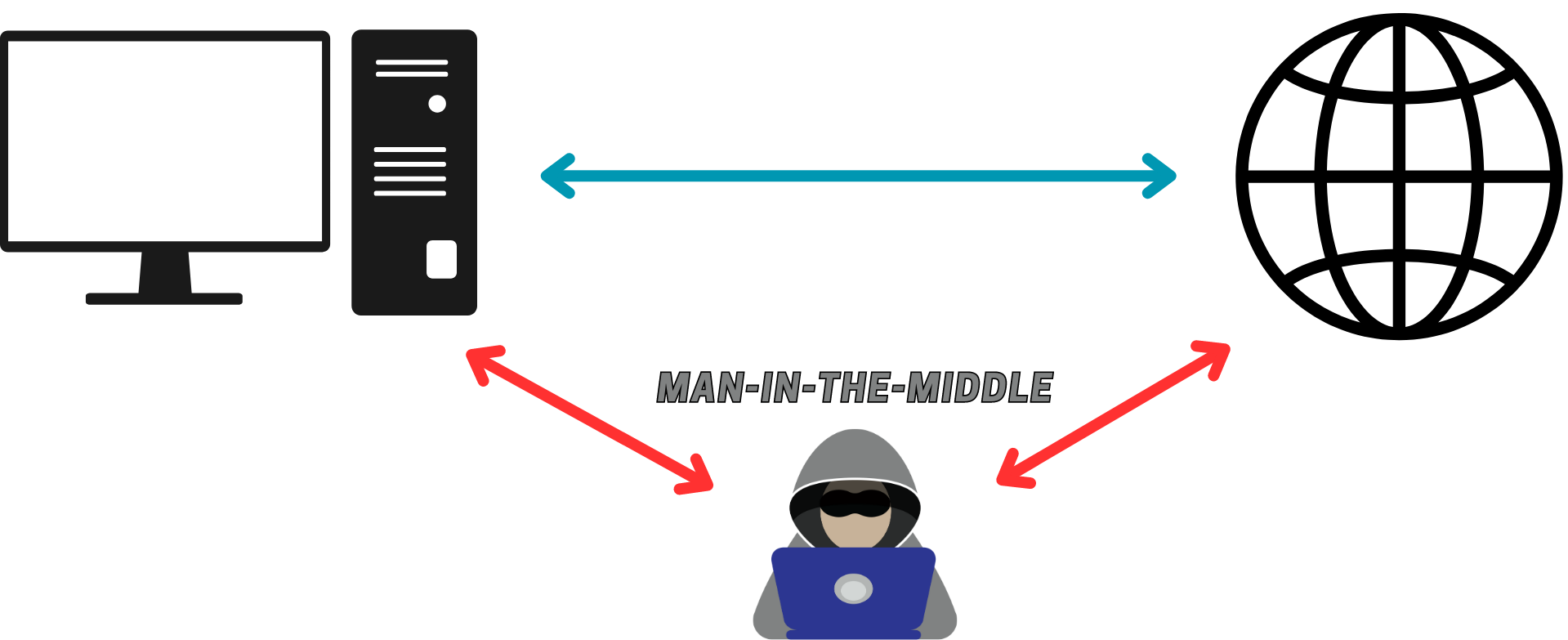
Introduction to Man-in-the-Middle Attacks
Man-in-the-Middle (MITM) attacks are a form of eavesdropping where an attacker secretly intercepts and relays communication between two parties. The attacker makes independent connections with the victims, making them believe they are talking directly to each other. Understanding MITM attacks is crucial for cybersecurity professionals, as they can lead to unauthorized access to sensitive information, such as login credentials, personal data, and financial information.
Types of Man-in-the-Middle Attacks
MITM attacks can be categorized into several types, each with unique characteristics and attack vectors:
- ARP Spoofing: Exploiting the Address Resolution Protocol to link the attacker's MAC address with the IP address of the victim's gateway.
- DNS Spoofing: Altering DNS records to redirect traffic to the attacker's machine.
- SSL Stripping: Downgrading HTTPS connections to HTTP to intercept unencrypted traffic.
- Wi-Fi Eavesdropping: Intercepting Wi-Fi traffic by creating a rogue access point.
- Email Hijacking: Gaining control over a victim's email account to monitor or alter communications.
Methods and Techniques for MITM Attacks
MITM attacks can be executed using various methods and techniques, depending on the target and the attacker's objectives:
- IP Spoofing: Creating IP packets with a forged source IP address to impersonate another system.
- Session Hijacking: Taking over an existing user session to gain unauthorized access.
- Packet Sniffing: Capturing data packets traveling over a network.
- Protocol Downgrade: Forcing victims to use older, less secure protocols.
- Rogue Access Points: Creating unauthorized Wi-Fi access points to intercept wireless traffic.
Tools for Man-in-the-Middle Attacks
Various tools can facilitate MITM attacks, each with specific functionalities. It's essential to understand these tools for both offensive testing and defensive measures:
- Wireshark: Network protocol analyzer for capturing and analyzing packets.
- Ettercap: Comprehensive suite for MITM attacks, including ARP poisoning.
- MITMf: Framework for conducting MITM attacks with various plugins.
- SSLstrip: Tool for stripping SSL protection from HTTPS connections.
- AirCrack-ng: Suite of tools for assessing Wi-Fi network security.
Preventing Man-in-the-Middle Attacks
Preventing MITM attacks requires a multi-layered approach, combining technological solutions and user awareness:
- Use HTTPS: Encourage the use of HTTPS to encrypt web traffic.
- Implement HSTS: HTTP Strict Transport Security forces browsers to use HTTPS.
- Secure Wi-Fi Networks: Utilize strong encryption and authentication for Wi-Fi.
- VPN: Encourage the use of Virtual Private Networks for secure communication.
- Education: Educate users about the risks and how to recognize potential threats.
Ethical Considerations
Understanding and studying MITM attacks is vital for cybersecurity professionals to defend against them. However, it's crucial to conduct any testing or probing in a responsible and legal manner. Always obtain proper authorization before engaging in any activities that might be construed as an attack, and adhere to professional and ethical standards. The knowledge gained should be used to enhance security and protect users, not to exploit vulnerabilities for malicious purposes.